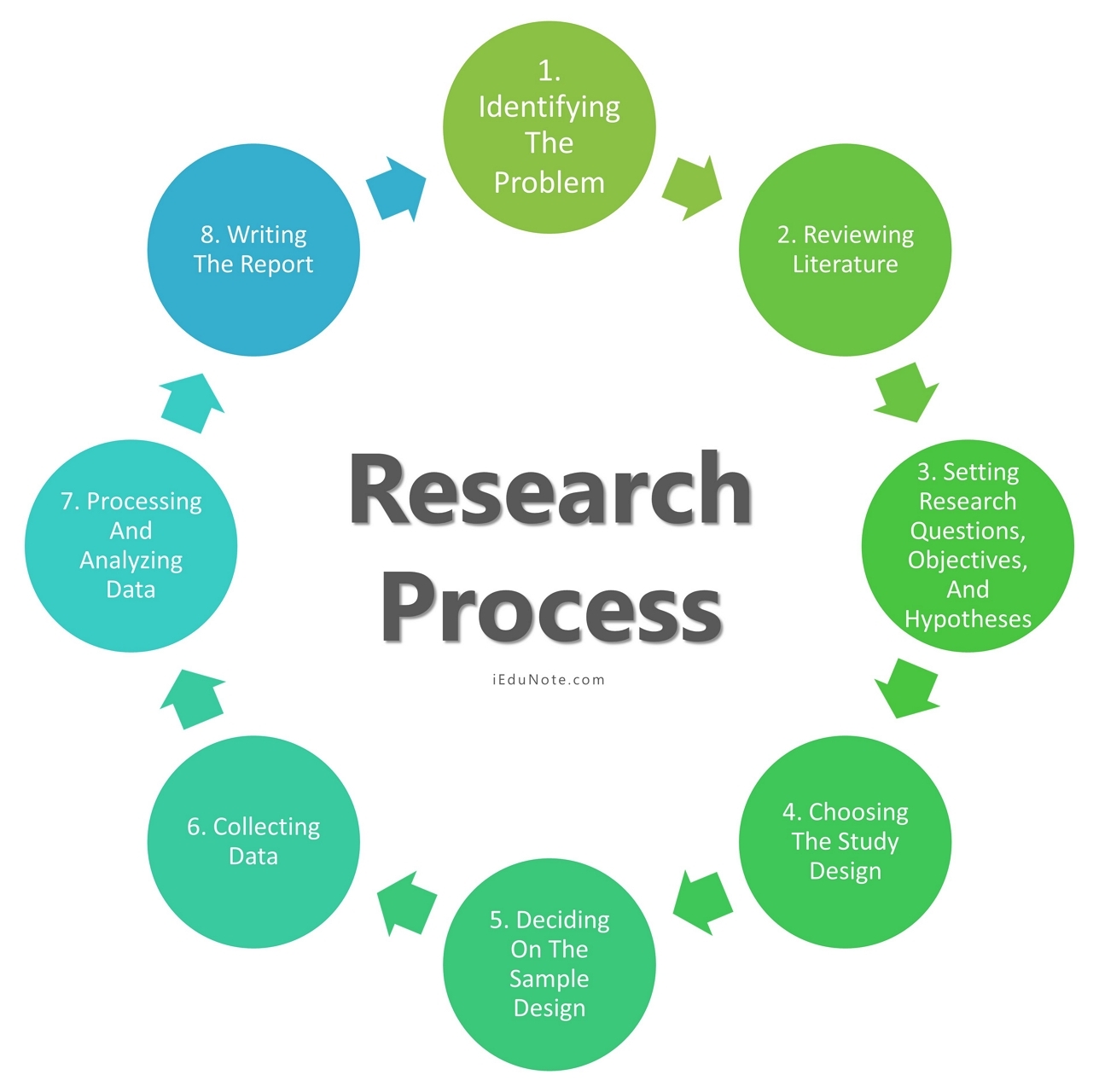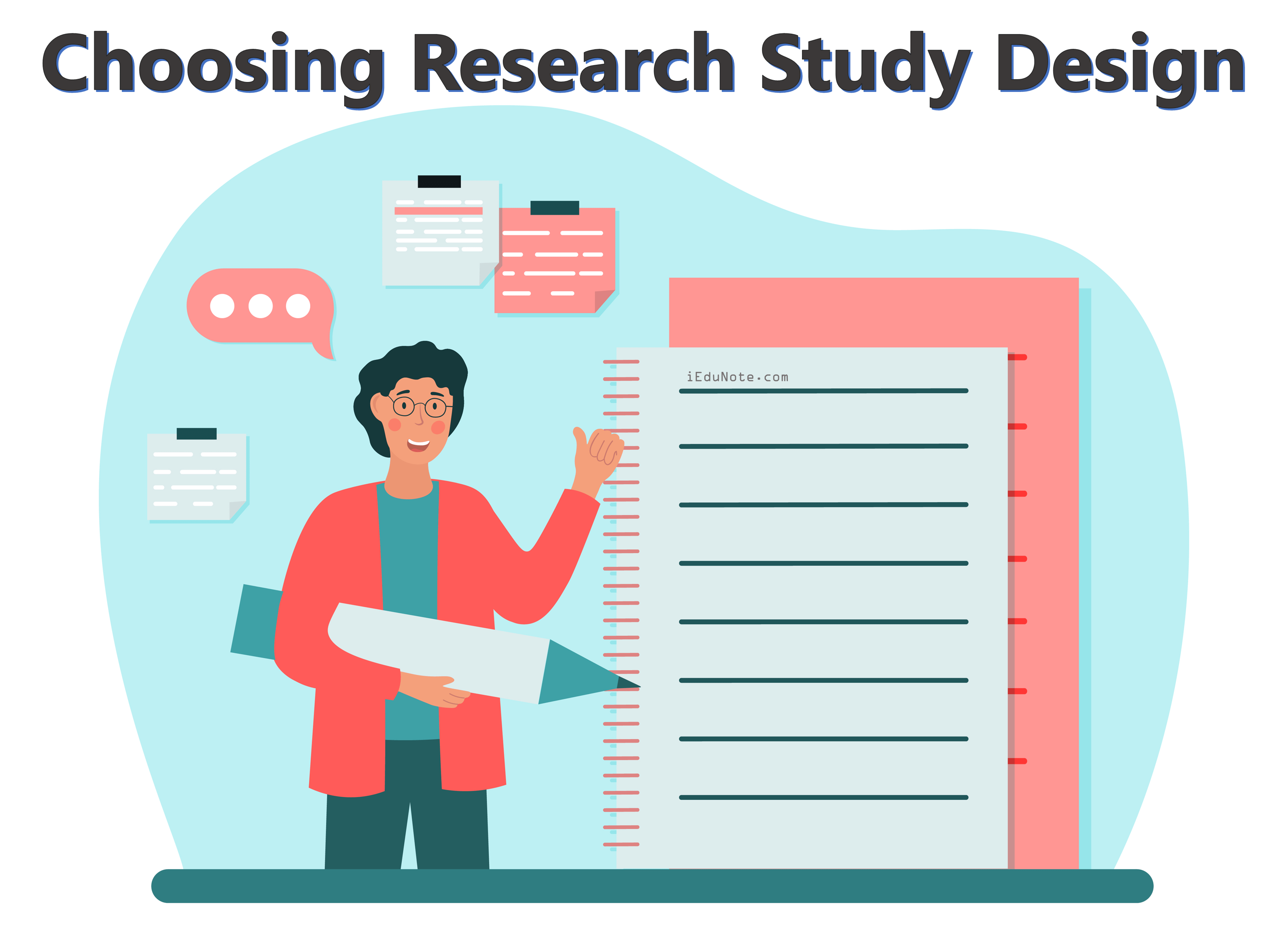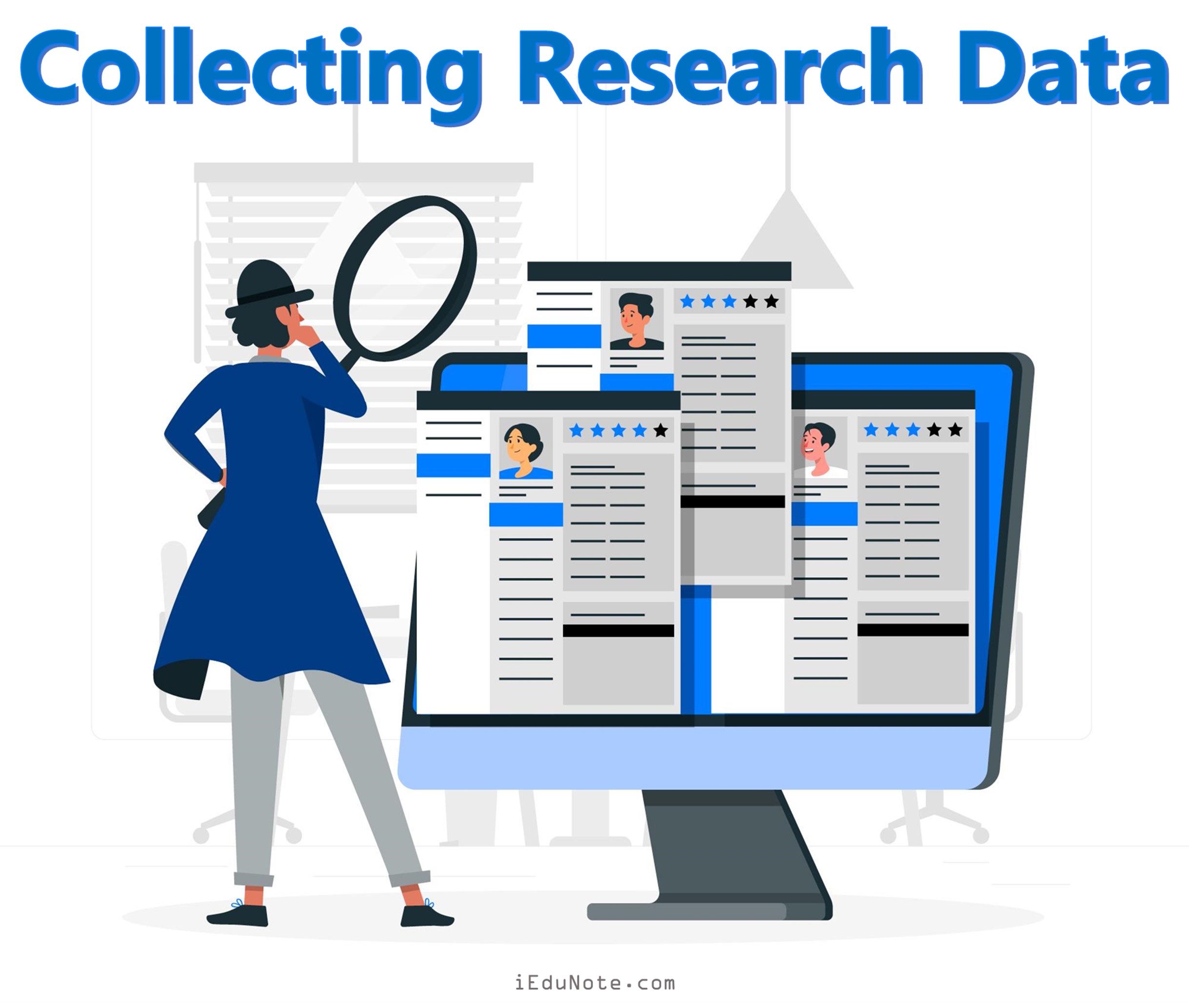The research process starts with identifying a research problem and conducting a literature review to understand the context. The researcher sets research questions, objectives, and hypotheses based on the research problem.
A research study design is formed to select a sample size and collect data after processing and analyzing the collected data and the research findings presented in a research report.
What is the Research Process?
There are a variety of approaches to research in any field of investigation, irrespective of whether it is applied research or basic research. Each research study will be unique in some ways because of the particular time, setting, environment, and place it is being undertaken.
Nevertheless, all research endeavors share a common goal of furthering our understanding of the problem, and thus, all traverse through certain primary stages, forming a process called the research process.
Understanding the research process is necessary to effectively carry out research and sequence the stages inherent in the process.
How Research Process Work?

Eight steps research process is, in essence, part and parcel of a research proposal. It is an outline of the commitment that you intend to follow in executing a research study.
A close examination of the above stages reveals that each of these stages, by and large, is dependent upon the others.
One cannot analyze data (step 7) unless he has collected data (step 6). One cannot write a report (step 8) unless he has collected and analyzed data (step 7).
Research then is a system of interdependent related stages. Violation of this sequence can cause irreparable harm to the study.
It is also true that several alternatives are available to the researcher during each stage stated above. A research process can be compared with a route map.
The map analogy is useful for the researcher because several alternatives exist at each stage of the research process.
Choosing the best alternative in terms of time constraints, money, and human resources in our research decision is our primary goal.
Before explaining the stages of the research process, we explain the term ‘iterative’ appearing within the oval-shaped diagram at the center of the schematic diagram.
The key to a successful research project ultimately lies in iteration: the process of returning again and again to the identification of the research problems, methodology, data collection, etc., which leads to new ideas, revisions, and improvements.
By discussing the research project with advisers and peers, one will often find that new research questions need to be added, variables to be omitted, added or redefined, and other changes to be made. As a proposed study is examined and reexamined from different perspectives, it may begin to transform and take a different shape.
This is expected and is an essential component of a good research study.
Besides, examining study methods and data collected from different viewpoints is important to ensure a comprehensive approach to the research question.
In conclusion, there is seldom any single strategy or formula for developing a successful research study, but it is essential to realize that the research process is cyclical and iterative.
What is the primary purpose of the research process?
The research process aims to identify a research problem, understand its context through a literature review, set research questions and objectives, design a research study, select a sample, collect data, analyze the data, and present the findings in a research report.
Why is the research design important in the research process?
The research design is the blueprint for fulfilling objectives and answering research questions. It specifies the methods and procedures for collecting, processing, and analyzing data, ensuring the study is structured and systematic.
8 Steps of Research Process
Identifying the Research Problem

A well-identified problem will lead the researcher to accomplish all-important phases of the research process, from setting objectives to selecting the research methodology.
But the core question is: whether all problems require research.
We have countless problems around us, but all we encounter do not qualify as research problems; thus, these do not need to be researched.
Keeping this point in mind, we must draw a line between research and non-research problems.
Intuitively, researchable problems are those that have a possibility of thorough verification investigation, which can be effected through the analysis and collection of data. In contrast, the non-research problems do not need to go through these processes.
Researchers need to identify both;
Non-Research Problems
A non-research problem does not require any research to arrive at a solution. Intuitively, a non-researchable problem consists of vague details and cannot be resolved through research.
It is a managerial or built-in problem that may be solved at the administrative or management level. The answer to any question raised in a non-research setting is almost always obvious.
The cholera outbreak, for example, following a severe flood, is a common phenomenon in many communities. The reason for this is known. It is thus not a research problem.
Similarly, the reasons for the sudden rise in prices of many essential commodities following the announcement of the budget by the Finance Minister need no investigation. Hence it is not a problem that needs research.
How is a research problem different from a non-research problem?
A research problem is a perceived difficulty that requires thorough verification and investigation through data analysis and collection. In contrast, a non-research problem does not require research for a solution, as the answer is often obvious or already known.
Non-Research Problems Examples
Example #1
A recent survey in town-A found that 1000 women were continuous users of contraceptive pills.
But last month’s service statistics indicate that none of these women were using contraceptive pills (Fisher et al. 1991:4).
The discrepancy is that ‘all 1000 women should have been using a pill, but none is doing so. The question is: why the discrepancy exists?
Well, the fact is, a monsoon flood has prevented all new supplies of pills from reaching town-A, and all old supplies have been exhausted. Thus, although the problem situation exists, the reason for the problem is already known.
Therefore, assuming all the facts are correct, there is no reason to research the factors associated with pill discontinuation among women. This is, thus, a non-research problem.
Example #2
A pilot survey by University students revealed that in Rural Town-A, the goiter prevalence among school children is as high as 80%, while in the neighboring Rural Town-A, it is only 30%. Why is a discrepancy?
Upon inquiry, it was seen that some three years back, UNICEF launched a lipiodol injection program in the neighboring Rural Town-A.
This attempt acted as a preventive measure against the goiter. The reason for the discrepancy is known; hence, we do not consider the problem a research problem.
Example #3
A hospital treated a large number of cholera cases with penicillin, but the treatment with penicillin was not found to be effective. Do we need research to know the reason?
Here again, there is one single reason that Vibrio cholera is not sensitive to penicillin; therefore, this is not the drug of choice for this disease.
In this case, too, as the reasons are known, it is unwise to undertake any study to find out why penicillin does not improve the condition of cholera patients. This is also a non-research problem.
Example #4
In the tea marketing system, buying and selling tea starts with bidders. Blenders purchase open tea from the bidders. Over the years, marketing cost has been the highest for bidders and the lowest for blenders. What makes this difference?
The bidders pay exorbitantly higher transport costs, which constitute about 30% of their total cost.
Blenders have significantly fewer marketing functions involving transportation, so their marketing cost remains minimal.
Hence no research is needed to identify the factors that make this difference.
Here are some of the problems we frequently encounter, which may well be considered non-research problems:
- Rises in the price of warm clothes during winter;
- Preferring admission to public universities over private universities;
- Crisis of accommodations in sea resorts during summer
- Traffic jams in the city street after office hours;
- High sales in department stores after an offer of a discount.
Research Problem
In contrast to a non-research problem, a research problem is of primary concern to a researcher.
A research problem is a perceived difficulty, a feeling of discomfort, or a discrepancy between a common belief and reality.
As noted by Fisher et al. (1993), a problem will qualify as a potential research problem when the following three conditions exist:
- There should be a perceived discrepancy between “what it is” and “what it should have been.” This implies that there should be a difference between “what exists” and the “ideal or planned situation”;
- A question about “why” the discrepancy exists. This implies that the reason(s) for this discrepancy is unclear to the researcher (so that it makes sense to develop a research question); and
- There should be at least two possible answers or solutions to the questions or problems.
The third point is important. If there is only one possible and plausible answer to the question about the discrepancy, then a research situation does not exist.
It is a non-research problem that can be tackled at the managerial or administrative level.
Research Problem Examples
Research Problem – Example #1
While visiting a rural area, the UNICEF team observed that some villages have female school attendance rates as high as 75%, while some have as low as 10%, although all villages should have a nearly equal attendance rate. What factors are associated with this discrepancy?
We may enumerate several reasons for this:
- Villages differ in their socio-economic background.
- In some villages, the Muslim population constitutes a large proportion of the total population. Religion might play a vital role.
- Schools are far away from some villages. The distance thus may make this difference.
Because there is more than one answer to the problem, it is considered a research problem, and a study can be undertaken to find a solution.
Research Problem – Example #2
The Government has been making all-out efforts to ensure a regular flow of credit in rural areas at a concession rate through liberal lending policy and establishing many bank branches in rural areas.
Knowledgeable sources indicate that expected development in rural areas has not yet been achieved, mainly because of improper credit utilization.
More than one reason is suspected for such misuse or misdirection.
These include, among others:
- Diversion of credit money to some unproductive sectors
- Transfer of credit money to other people like money lenders, who exploit the rural people with this money
- Lack of knowledge of proper utilization of the credit.
Here too, reasons for misuse of loans are more than one. We thus consider this problem as a researchable problem.
Research Problem – Example #3
Let’s look at a new headline: Stock Exchange observes the steepest ever fall in stock prices: several injured as retail investors clash with police, vehicles ransacked.
Investors’ demonstration, protest and clash with police pause a problem. Still, it is certainly not a research problem since there is only one known reason for the problem: Stock Exchange experiences the steepest fall in stock prices. But what causes this unprecedented fall in the share market?
Experts felt that no single reason could be attributed to the problem. It is a mix of several factors and is a research problem. The following were assumed to be some of the possible reasons:
- The merchant banking system;
- Liquidity shortage because of the hike in the rate of cash reserve requirement (CRR);
- IMF’s warnings and prescriptions on the commercial banks’ exposure to the stock market;
- Increase in supply of new shares;
- Manipulation of share prices;
- Lack of knowledge of the investors on the company’s fundamentals.
The choice of a research problem is not as easy as it appears. The researchers generally guide it;
- own intellectual orientation,
- level of training,
- experience,
- knowledge on the subject matter, and
- intellectual curiosity.
Theoretical and practical considerations also play a vital role in choosing a research problem. Societal needs also guide in choosing a research problem.
Once we have chosen a research problem, a few more related steps must be followed before a decision is taken to undertake a research study.
These include, among others, the following:
- Statement of the problem.
- Justifying the problem.
- Analyzing the problem.
A detailed exposition of these issues is undertaken in chapter ten while discussing the proposal development.
Statement of the Problem
A clear and well-defined problem statement is considered the foundation for developing the research proposal.
It enables the researcher to systematically point out why the proposed research on the problem should be undertaken and what he hopes to achieve with the study’s findings.
A well-defined statement of the problem will lead the researcher to formulate the research objectives, understand the background of the study, and choose a proper research methodology.
Justifying the Problem
Once the problem situation has been identified and clearly stated, it is important to justify the importance of the problem.
In justifying the problems, we ask such questions as why the problem of the study is important, how large and widespread the problem is, and whether others can be convinced about the importance of the problem and the like.
Answers to the above questions should be reviewed and presented in one or two paragraphs that justify the importance of the problem.
Analyzing the Problem
As a first step in analyzing the problem, critical attention should be given to accommodate the viewpoints of the managers, users, and researchers to the problem through threadbare discussions.
The next step is identifying the factors that may have contributed to the perceived problems.
Issues of Research Problem Identification
There are several ways to identify, define, and analyze a problem, obtain insights, and get a clearer idea about these issues. Exploratory research is one of the ways of accomplishing this.
The purpose of the exploratory research process is to progressively narrow the scope of the topic and transform the undefined problems into defined ones, incorporating specific research objectives.
The exploratory study entails a few basic strategies for gaining insights into the problem. It is accomplished through such efforts as:
Pilot Survey
A pilot survey collects proxy data from the ultimate subjects of the study to serve as a guide for the large study. A pilot study generates primary data, usually for qualitative analysis.
This characteristic distinguishes a pilot survey from secondary data analysis, which gathers background information.
Case Studies
Case studies are quite helpful in diagnosing a problem and paving the way to defining the problem. It investigates one or a few situations identical to the researcher’s problem.
Focus Group Interviews
Experience Survey
Experience survey is another strategy to deal with the problem of identifying and defining the research problem.
It is an exploratory research endeavor in which individuals knowledgeable and experienced in a particular research problem are intimately consulted to understand the problem.
These persons are sometimes known as key informants, and an interview with them is popularly known as the Key Informant Interview (KII).
Reviewing of Literature

A review of relevant literature is an integral part of the research process. It enables the researcher to formulate his problem in terms of the specific aspects of the general area of his interest that has not been researched so far.
Such a review provides exposure to a larger body of knowledge and equips him with enhanced knowledge to efficiently follow the research process.
Through a proper review of the literature, the researcher may develop the coherence between the results of his study and those of the others.
A review of previous documents on similar or related phenomena is essential even for beginning researchers.
Ignoring the existing literature may lead to wasted effort on the part of the researchers.
Why spend time merely repeating what other investigators have already done?
Suppose the researcher is aware of earlier studies of his topic or related topics. In that case, he will be in a much better position to assess his work’s significance and convince others that it is important.
A confident and expert researcher is more crucial in questioning the others’ methodology, the choice of the data, and the quality of the inferences drawn from the study results.
In sum, we enumerate the following arguments in favor of reviewing the literature:
- It avoids duplication of the work that has been done in the recent past.
- It helps the researcher discover what others have learned and reported on the problem.
- It enables the researcher to become familiar with the methodology followed by others.
- It allows the researcher to understand what concepts and theories are relevant to his area of investigation.
- It helps the researcher to understand if there are any significant controversies, contradictions, and inconsistencies in the findings.
- It allows the researcher to understand if there are any unanswered research questions.
- It might help the researcher to develop an analytical framework.
- It will help the researcher consider including variables in his research that he might not have thought about.
Why is reviewing literature crucial in the research process?
Reviewing literature helps avoid duplicating previous work, discovers what others have learned about the problem, familiarizes the researcher with relevant concepts and theories, and ensures a comprehensive approach to the research question.
What is the significance of reviewing literature in the research process?
Reviewing relevant literature helps formulate the problem, understand the background of the study, choose a proper research methodology, and develop coherence between the study’s results and previous findings.
Setting Research Questions, Objectives, and Hypotheses

After discovering and defining the research problem, researchers should make a formal statement of the problem leading to research objectives.
An objective will precisely say what should be researched, delineate the type of information that should be collected, and provide a framework for the scope of the study. A well-formulated, testable research hypothesis is the best expression of a research objective.
A hypothesis is an unproven statement or proposition that can be refuted or supported by empirical data. Hypothetical statements assert a possible answer to a research question.
Step #4: Choosing the Study Design

The research design is the blueprint or framework for fulfilling objectives and answering research questions.
It is a master plan specifying the methods and procedures for collecting, processing, and analyzing the collected data. There are four basic research designs that a researcher can use to conduct their study;
- survey,
- experiment,
- secondary data study, and
- observational study.
The type of research design to be chosen from among the above four methods depends primarily on four factors:
- The type of problem
- The objectives of the study,
- The existing state of knowledge about the problem that is being studied, and
- The resources are available for the study.
Deciding on the Sample Design

Sampling is an important and separate step in the research process. The basic idea of sampling is that it involves any procedure that uses a relatively small number of items or portions (called a sample) of a universe (called population) to conclude the whole population.
It contrasts with the process of complete enumeration, in which every member of the population is included.
Such a complete enumeration is referred to as a census.
A population is the total collection of elements we wish to make some inference or generalization.
A sample is a part of the population, carefully selected to represent that population. If certain statistical procedures are followed in selecting the sample, it should have the same characteristics as the population. These procedures are embedded in the sample design.
Sample design refers to the methods followed in selecting a sample from the population and the estimating technique vis-a-vis the formula for computing the sample statistics.
The fundamental question is, then, how to select a sample.
To answer this question, we must have acquaintance with the sampling methods.
These methods are basically of two types;
Probability sampling ensures every unit has a known nonzero probability of selection within the target population.
If there is no feasible alternative, a non-probability sampling method may be employed.
The basis of such selection is entirely dependent on the researcher’s discretion. This approach is called judgment sampling, convenience sampling, accidental sampling, and purposive sampling.
The most widely used probability sampling methods are simple random sampling, stratified random sampling, cluster sampling, and systematic sampling. They have been classified by their representation basis and unit selection techniques.
Two other variations of the sampling methods that are in great use are multistage sampling and probability proportional to size (PPS) sampling.
Multistage sampling is most commonly used in drawing samples from very large and diverse populations.
The PPS sampling is a variation of multistage sampling in which the probability of selecting a cluster is proportional to its size, and an equal number of elements are sampled within each cluster.
Collecting Data From The Research Sample

Data gathering may range from simple observation to a large-scale survey in any defined population. There are many ways to collect data. The approach selected depends on the objectives of the study, the research design, and the availability of time, money, and personnel.
The most common means for collecting quantitative data is the structured interview.
Studies that obtain data by interviewing respondents are called surveys. Data can also be collected by using self-administered questionnaires. Telephone interviewing is another way in which data may be collected.
Other means of data collection include secondary sources, such as the census, vital registration records, official documents, previous surveys, etc.
Qualitative data are collected mainly through in-depth interviews, focus group discussions, Key Informant Interview (KII), and observational studies.
Process and Analyze the Collected Research Data

Data processing generally begins with the editing and coding of data. Data are edited to ensure consistency across respondents and to locate omissions if any.
In survey data, editing reduces errors in the recording, improves legibility, and clarifies unclear and inappropriate responses. In addition to editing, the data also need coding.
Because it is impractical to place raw data into a report, alphanumeric codes are used to reduce the responses to a more manageable form for storage and future processing.
This coding process facilitates the processing of the data. The personal computer offers an excellent opportunity for data editing and coding processes.
Data analysis usually involves reducing accumulated data to a manageable size, developing summaries, searching for patterns, and applying statistical techniques for understanding and interpreting the findings in light of the research questions.
Further, based on his analysis, the researcher determines if his findings are consistent with the formulated hypotheses and theories.
The techniques used in analyzing data may range from simple graphical techniques to very complex multivariate analyses depending on the study’s objectives, the research design employed, and the nature of the data collected.
As in the case of data collection methods, an analytical technique appropriate in one situation may not be suitable for another.
Writing Research Report – Developing Research Proposal, Writing Report, Disseminating and Utilizing Results

The entire task of a research study is accumulated in a document called a proposal or research proposal.
The proposal will be prepared to keep the sequence presented in the research process. The proposal tells us what, how, where, and to whom it will be done.
It must also show the benefit of doing it. It always includes an explanation of the purpose of the study (the research objectives) or a definition of the problem.
It systematically outlines the particular research methodology and details the procedures utilized at each stage of the research process.
The end goal of a scientific study is to interpret the results and draw conclusions.
To this end, it is necessary to prepare a report and transmit the findings and recommendations to administrators, policymakers, and program managers to make a decision.
There are various research reports: term papers, dissertations, journal articles, papers for presentation at professional conferences and seminars, books, thesis, and so on. The results of a research investigation prepared in any form are of little utility if they are not communicated to others.
The primary purpose of a dissemination strategy is to identify the most effective media channels to reach different audience groups with study findings most relevant to their needs.
The dissemination may be made through a conference, a seminar, a report, or an oral or poster presentation.
The style and organization of the report will differ according to the target audience, the occasion, and the purpose of the research. Reports should be developed from the client’s perspective.
A report is an excellent means that helps to establish the researcher’s credibility. At a bare minimum, a research report should contain sections on:
- An executive summary;
- Background of the problem;
- Literature review;
- Methodology;
- Findings;
- Discussion;
- Conclusions and
- Recommendations.
The study results can also be disseminated through peer-reviewed journals published by academic institutions and reputed publishers both at home and abroad. The report should be properly evaluated.
These journals have their format and editorial policies. The contributors can submit their manuscripts adhering to the policies and format for possible publication of their papers.
There are now ample opportunities for researchers to publish their work online.
The researchers have conducted many interesting studies without affecting actual settings. Ideally, the concluding step of a scientific study is to plan for its utilization in the real world.
Although researchers are often not in a position to implement a plan for utilizing research findings, they can contribute by including in their research reports a few recommendations regarding how the study results could be utilized for policy formulation and program intervention.
Why is the dissemination of research findings important?
Dissemination of research findings is crucial because the results of a research investigation have little utility if not communicated to others. Dissemination ensures that the findings reach relevant stakeholders, policymakers, and program managers to inform decisions.
How should a research report be structured?
A research report should contain sections on an executive summary, background of the problem, literature review, methodology, findings, discussion, conclusions, and recommendations.
Why is it essential to consider the target audience when preparing a research report?
The style and organization of a research report should differ based on the target audience, occasion, and research purpose. Tailoring the report to the audience ensures that the findings are communicated effectively and are relevant to their needs.